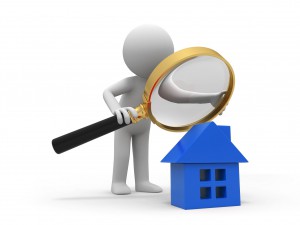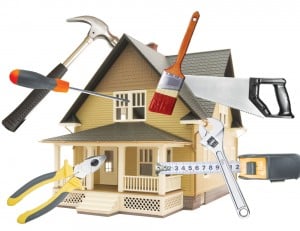When it comes to buying a home or an investment property, it is vital that you conduct a thorough inspection before you sign on the dotted line – to ensure you don’t buy a lemon.
Just because a property looks good on the outside, it could have serious defects that may not be immediately obvious and they may end up costing you thousands of dollars to repair.
A property inspection will help you avoid blowing your budget on unexpected repairs and maintenance work, and it could also save you from the emotional strain of watching your beloved purchase turn into a disaster.
There are two main ways you can inspect a property:
1. Do it yourself – When conducting a personal inspection, it is important that you take a balanced approach. 
You’re looking for the downsides as well as what makes the property an attractive buy.
You might also like to ask your family and/or friends to come along for an inspection too, to make sure you don’t miss anything.
2. Bring in the experts – When you’re serious about buying, you can bring the experts, such as pest inspectors etc, to help ensure your property is free from defects.
Keeping a close eye out for problems and reflecting on what you’ve discovered will enable you to objectively decide whether or not a property is worth pursuing, or whether it is worth incurring the added expense of bringing in the experts to do further investigations.
Either way, a balanced property inspection can save you time, money and effort.
In my experience over the years, I have found there are certain areas you should particularly focus on when conducting a property inspection.
With this in mind, this 4 part series will detail each of the key problem identified below.
10 Key Problem Areas to Focus On
- Water Damage
- Uneven Floors, Walls and Ceilings
- Foundation Problems
- Plumbing Issues
- Driveway and Paving Problems
- Renovation Restrictions and Limitations
- Problems with the Property’s History
- Electrical Wiring Issues
- Pest Damage
- Problems Concealed by a New Paint Job
In this article, we will go over the first 2 potential problem areas from the list.
1. Water Damage
Look for signs of water damage.
The impact of water damage can be minor or major, depending on the cause and the duration of the problem.
However, problems can be expensive to fix, especially when they effect the structural integrity of the property.
Signs of water damage can be found in many places.
To start with, check out the walls and ceilings for stains and watermarks, and be on alert for damp smells, mould and mildew – especially in the kitchen, bathrooms and when opening up cupboards.
You should also inspect the property’s gutters and down-pipes to make sure there is no rust, leaks or other damage, and also ensure rainwater is discharging into storm water drains and not onto the ground or the structure of the house.
Another thing to look out for is wet ceiling insulation.
This could mean there is a leak in the roof somewhere, and you’ll probably need the help of an expert (like a roofer) if you think this may be an issue.
Finally, turn on all the taps throughout the house to see how good (or bad) the water pressure is. Low water pressure may indicate there’s a leak in the plumbing.
2. Uneven Floors, Walls and Ceilings
Floors, walls and ceilings should be straight and fixed flush in place.
To check for any anomalies, start by casting your eye over surfaces to identify undulations, sags and gaps.
Another good way to find problems is to shine a torch over surfaces, especially ceilings and walls, to see if there are any shadows or deflections that shouldn’t be there.
In addition, bowed, sagging and springy wooden floors can be a sign that there may be more serious problems to deal with other than having to replace a few damaged floorboards.
If you do find problems, it could be down to a number of causes, including:
- For older properties, it could simply be a symptom of age and a lack of repair and maintenance work.

This would be your responsibility to repair if you decide to go through with the purchase and buy the property. - If the home is on stumps, it could be a sign that the stumps are worn, displaced or rotten (if they’re made of wood) and are not supporting the floors as they should.
- It may indicate foundation settlement, meaning that the land the house/unit is built on gives way over time and is unable to adequately support the property’s weight, causing it to shift.
- It could be a sign of moisture issues.
Moisture may have damaged the wooden support structures of the property, causing the wood to become soft and ultimately to decay and sag.
The cost of remedying these issues will depend on the severity of the problems themselves, and can become very expensive.
In these circumstances, getting an independent structural report could pay dividends.
It would identify both the extent of any damage and the cost of necessary repair work, and this alone may help you decide whether or not to proceed with purchasing the property.
Tomorrow in Part 2 we will go over how to identify foundation problems and plumbing issues.
Editors Note: This article has been republished for the benefit of our many new readers


No comments:
Post a Comment